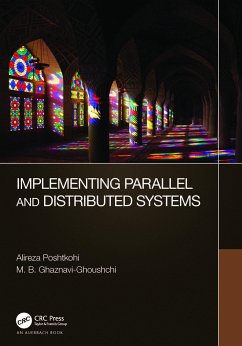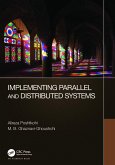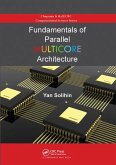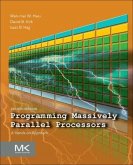Parallel and distributed systems (PADS) have evolved from the early days of computational science and supercomputers to a wide range of novel computing paradigms, each of which is exploited to tackle specific problems or application needs, including distributed systems, parallel computing, and cluster computing, generally called high-performance computing (HPC). Grid, Cloud, and Fog computing patterns are the most important of these PADS paradigms, which share common concepts in practice.
Many-core architectures, multi-core cluster-based supercomputers, and Cloud Computing paradigms in this era of exascale computers have tremendously influenced the way computing is applied in science and academia (e.g., scientific computing and large-scale simulations). Implementing Parallel and Distributed Systems presents a PADS infrastructure known as Parvicursor that can facilitate the construction of such scalable and high-performance parallel distributed systems as HPC, Grid, andCloud Computing.
This book covers parallel programming models, techniques, tools, development frameworks, and advanced concepts of parallel computer systems used in the construction of distributed and HPC systems. It specifies a roadmap for developing high-performance client-server applications for distributed environments and supplies step-by-step procedures for constructing a native and object-oriented C++ platform.
FEATURES:
Hardware and software perspectives on parallelismParallel programming many-core processors, computer networks and storage systemsParvicursor.NET Framework: a partial, native, and cross-platform C++ implementation of the .NET FrameworkxThread: a distributed thread programming model by combining thread-level parallelism and distributed memory programming modelsxDFS: a native cross-platform framework for efficient file transferParallel programming for HPC systems and supercomputers using message passing interface (MPI)
Focusing on data transmission speed that exploits the computing power of multicore processors and cutting-edge system-on-chip (SoC) architectures, it explains how to implement an energy-efficient infrastructure and examines distributing threads amongst Cloud nodes. Taking a solid approach to design and implementation, this book is a complete reference for designing, implementing, and deploying these very complicated systems.
Many-core architectures, multi-core cluster-based supercomputers, and Cloud Computing paradigms in this era of exascale computers have tremendously influenced the way computing is applied in science and academia (e.g., scientific computing and large-scale simulations). Implementing Parallel and Distributed Systems presents a PADS infrastructure known as Parvicursor that can facilitate the construction of such scalable and high-performance parallel distributed systems as HPC, Grid, andCloud Computing.
This book covers parallel programming models, techniques, tools, development frameworks, and advanced concepts of parallel computer systems used in the construction of distributed and HPC systems. It specifies a roadmap for developing high-performance client-server applications for distributed environments and supplies step-by-step procedures for constructing a native and object-oriented C++ platform.
FEATURES:
Hardware and software perspectives on parallelismParallel programming many-core processors, computer networks and storage systemsParvicursor.NET Framework: a partial, native, and cross-platform C++ implementation of the .NET FrameworkxThread: a distributed thread programming model by combining thread-level parallelism and distributed memory programming modelsxDFS: a native cross-platform framework for efficient file transferParallel programming for HPC systems and supercomputers using message passing interface (MPI)
Focusing on data transmission speed that exploits the computing power of multicore processors and cutting-edge system-on-chip (SoC) architectures, it explains how to implement an energy-efficient infrastructure and examines distributing threads amongst Cloud nodes. Taking a solid approach to design and implementation, this book is a complete reference for designing, implementing, and deploying these very complicated systems.









